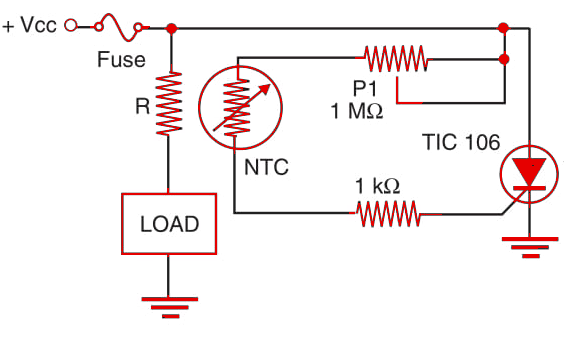This circuit can be used to protect motors and other loads in case of overload. The NTC is mounted near a nicrome wire or a wire-wound resistor. A fuse is used as a protective element as shown in Figure 1.

When the temperature of the resistor or wire rises because of an overcurrent condition, the NTC triggers the SCR on, and the fuse is put in a short circuit with ground. This causes the fuse to open, protecting the circuit.
The resistance of the potentiometer must be 3 to 5 times the resistance of the NTC in the normal operating temperature. NTCs with resistances in the range between 1 and 100 kΩ are recommended for SCRs of the 106 family. See the crowbar circuits described in previous blocks for more details. Remember that the SCR can handle the high current necessary to burn the fuse in this application.



